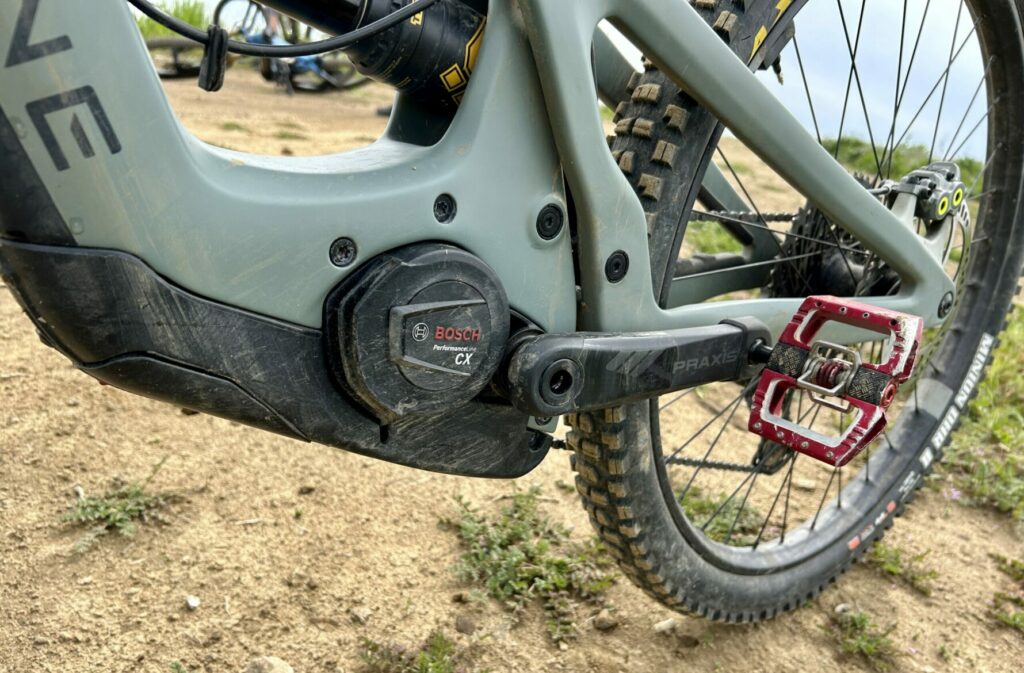No matter if you want an e-MTB, an e-road bike, or any other type of e-bike, you’ll have three types of motor classes to choose from. I know, I know; why do they have to make it complicated? Well, there are a few key differences between Class I, II, and III e-bikes. Let’s break it down and help you pick the right e-bike class.
| E-Bike Class | Motor’s Top Speed | Max Motor Wattage | Pedal Assist | Hand throttle |
| Class I | 20mph | 750 watts | Yes | No |
| Class II | 20mph | 750 watts | Yes | Yes |
| Class III | 28mph | 750 watts | Yes | No |
Why You Want a Class 1 E-Bike
Of all the e-bike classes, Class I gives you the most access to a variety of bike lanes, bike paths, and trails. In the U.S. e-bike regulations vary state by state. Also, when it comes to mountain biking on public land, it may depend on the land manager’s policy (i.e., U.S. Forest Service versus state parks). If you’re looking to ride trails on an e-bike, it’s best to opt for Class I. In fact, most e-mountain bikes are Class I.
Why You Want a Class 2 E-Bike
Class II e-bikes are more uncommon, especially when you’re looking for performance-oriented bikes. The key difference is the handlebar-mounted throttle that allows you to give it the beans without having to pedal. This is a nice option for commuter bikes, especially if you are out on a sweltering summer day, trying to keep cool. Access is more restricted for Class II bikes, especially on trails.
Honestly, you probably don’t really want a Class II. It is entirely possible that this standard will become obsolete, as most city planners, trail managers, and bike companies have gravitated toward Classes I and III.
Why You Want a Class 3 E-Bike
This class of e-bike is often reserved for performance drop-bar e-bikes — road and gravel e-bikes. It’s great to have that extra 8mph of top-end speed, but these bikes still offer the natural ride feel of a pedal-assist motor. Again, rules and regulations vary by state, so keep in mind that in some places, you might not be able to ride a Class III e-bike on bike paths or trails.
Conclusion
The three e-bike classes don’t differ too wildly from each other. The most noticeable variance is the throttle found on a Class II e-bike. Painting with broad strokes, you can expect e-MTBs to have Class I motors, and e-road or gravel bikes will likely have Class III motors. Naturally, there are exceptions to the rule, your mileage may vary. Let me know if you have any question in the comments!
P.S. We use affiliate links here at Direct Current. If you’re considering buying a Specialized e-bike, we’ll get a little kickback if you purchase using a link from this story. 😀

3 thoughts on “Guide to E-Bike Classes”
What percentage of the power is provided by the motor as opposed to the rider if you don’t get a class 2?
Hey Bill, good question, and a bit of a tricky one to answer. For starters, the electric assist is capped based on speed — if a Class 1 e-bike reaches 20mph, or a Class 3 reaches 28mph, then there is no assist at all. By law, motor power is limited to 750 watts. However, if your drive unit is in an “Eco” setting, for instance, it might only give you 50% of your power in order to conserve battery life.
OK, real world example: Specialized says its Turbo Full-Power 2.2 motor is “4x you” in the Turbo setting. With a max output of 565 watts, that’s a lot of extra power on offer!
How do u operate the avantrek ebike mountain bike